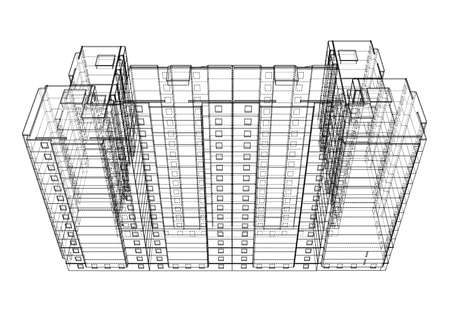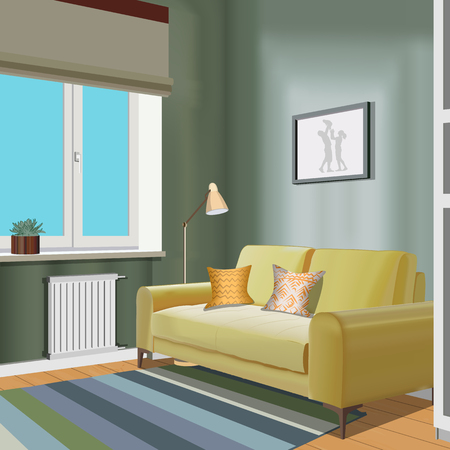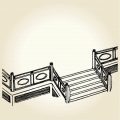1. Understanding Feng Shui Principles for Modern Living
Feng shui is an ancient Chinese practice that focuses on creating harmony between people and their living spaces. While traditional feng shui often refers to homes with plenty of natural light and spacious layouts, today’s American apartment dwellers face unique challenges—like limited sunlight, small floor plans, and rental restrictions that can make big changes difficult. Still, the core ideas of feng shui are surprisingly adaptable for modern renters.
What Is Feng Shui?
At its heart, feng shui is about the flow of energy (or chi) in your space. The goal is to arrange your home in a way that encourages positive energy, supports well-being, and minimizes stress. This can be done through furniture placement, color choices, and even the types of decor you use.
Key Principles of Feng Shui
| Principle | What It Means | How It Applies to Rentals |
|---|---|---|
| Chi Flow | Ensuring energy moves easily throughout your space | Avoid blocking pathways with furniture; keep entryways clear |
| Balance (Yin & Yang) | Mixing calm (yin) and active (yang) elements for harmony | Add soft lighting or textiles to balance harsh fixtures or dark corners |
| The Five Elements | Incorporating wood, fire, earth, metal, and water for a balanced environment | Use items like plants (wood), candles (fire), stones (earth), metallic frames (metal), and bowls of water (water) |
| The Bagua Map | A tool for mapping out areas of life (wealth, health, relationships) in your home | Place meaningful objects in corresponding zones—even if it’s just a shelf or corner in a studio apartment |
Low-Light Apartment Challenges—and Opportunities
Many American apartments have limited natural light due to building layouts or window size. Low-light environments can feel stagnant or gloomy, which goes against the positive energy flow that feng shui aims for. However, simple adjustments—like using mirrors to reflect available light or adding vibrant art—can help boost energy even in dim spaces.
Rental Limitations: Working Within Your Lease
If you rent your apartment, you might not be able to paint walls or install new fixtures. But feng shui doesn’t require major renovations. Portable solutions like moveable lamps, removable wall decals, and strategic furniture placement can all make a big difference without risking your security deposit.
Quick Tips for Renters Facing Low Light:
- Add mirrors: Place them across from windows or lamps to double available light.
- Select light-colored decor: Choose pale rugs or curtains to brighten rooms.
- Bring in plants: Even low-light varieties like snake plants or pothos support healthy chi.
- Use layered lighting: Mix floor lamps with table lamps to create warm pools of light throughout the space.
- Tidy up regularly: Clutter blocks energy flow—keep walkways open and surfaces clear.
This foundation of feng shui gives you practical ways to improve your apartment’s energy—even if you’re working with low light and strict rental rules. In the next section, we’ll dive deeper into choosing the right colors and materials for these environments.
2. Maximizing Light and Energy Flow in Dim Spaces
Practical Tips for Enhancing Natural Light
Even if your apartment gets very little sunlight, you can still use a few easy tricks to make the most of what you have. Start by keeping windows clean and free from heavy curtains or bulky blinds. Sheer curtains are a great choice because they offer privacy without blocking light. Mirrors are also fantastic tools in Feng Shui—they reflect both natural and artificial light, making any room feel brighter and more spacious. Place mirrors across from windows or in darker corners to bounce more light around your home.
Choosing Appropriate Artificial Lighting
Good lighting is essential for positive energy (or “chi”) flow, especially in apartments with limited natural light. When picking artificial lights, go for warm white or daylight bulbs that mimic sunlight. Layer different types of lighting: overhead lights, floor lamps, and desk lamps all play a role. Consider using smart bulbs so you can adjust brightness and color temperature throughout the day. Avoid harsh fluorescent lighting, which can create a cold and uncomfortable atmosphere.
Lighting Options Table
| Light Type | Best For | Feng Shui Tip |
|---|---|---|
| Overhead Light | Main living areas | Use dimmers for flexibility |
| Floor Lamp | Corners or next to seating | Add a soft glow to dark spots |
| Desk/Table Lamp | Workspaces & bedrooms | Avoid placing directly behind you to reduce shadows |
| Wall Sconce | Hallways & small rooms | Uplighting can lift chi energy upward |
| LED Strip Light | Shelves & cabinets | Add hidden light for subtle brightness boost |
Optimizing Furniture Placement for Energy Flow
The way you arrange furniture impacts how energy moves through your space. In low-light apartments, avoid blocking windows and pathways with bulky furniture. Place sofas and chairs so they face doors whenever possible—this helps invite good energy into the room. Keep walkways open and clutter-free to allow chi to circulate freely. If you have a particularly dark corner, try placing a tall plant or lamp there to activate stagnant energy.
Quick Feng Shui Checklist for Dim Spaces:
- Keep window areas clear of large objects.
- Add mirrors opposite light sources.
- Use layered lighting throughout each room.
- Avoid dark or heavy furniture near windows.
- Circular or oval tables help improve flow versus sharp corners.
- Add plants to soften and energize shadowy spots.
- Choose light-colored décor and accessories to brighten the mood.

3. Bringing Nature Indoors When Light is Limited
Even if your apartment or rental space doesn’t get much natural sunlight, you can still bring the uplifting energy of nature inside. In Feng Shui, natural elements are key to creating balance, vitality, and harmony in your home. Let’s look at some easy ways to make your low-light space feel alive and welcoming.
Choosing Low-Light-Friendly Plants
Not all plants need lots of sunshine. Some thrive in shaded corners and can help purify the air while boosting positive energy. Here’s a quick guide to beginner-friendly, low-light houseplants:
| Plant Name | Why It Works | Care Tips |
|---|---|---|
| Pothos (Devil’s Ivy) | Hardy, grows well in dim spaces | Water when dry; trim as needed |
| Snake Plant | Tolerates low light; cleans air | Let soil dry between waterings |
| ZZ Plant | Almost indestructible; minimal care | Water every 2-3 weeks |
| Bamboo Palm | Adds tropical vibes; purifies air | Keep soil moist but not soggy |
| Peace Lily | Elegant look; improves humidity | Water regularly; avoid direct sun |
Bringing in Natural Decor and Materials
You can also invite natural energy with decor that doesn’t depend on light. Think about:
- Wood Accents: Use wooden shelves, picture frames, or small furniture pieces for warmth and grounding.
- Naturally Textured Fabrics: Linen, cotton, and jute throw pillows or rugs add earthiness.
- Stone or Crystal Decor: Smooth stones, geodes, or small crystal clusters boost calming energy on shelves or desks.
- Baskets and Woven Items: Storage baskets made from rattan or seagrass organize your space while connecting you to nature.
- Nature-Inspired Artwork: Hang prints of plants, landscapes, or abstract art with earthy tones to bring outdoor feelings indoors.
Clever Placement Tips for Maximum Feng Shui Impact
- Avoid Clutter: Keep plant displays simple so energy can flow freely around them.
- Create a Focal Point: Place a larger plant or striking decor piece where you want to draw attention or boost energy (like near your entryway).
- Mimic Sunlight: If possible, use warm LED lights aimed upward or toward your plants to mimic daylight and keep them healthy.
- Add Water Elements: A small tabletop fountain or bowl with floating candles can enhance tranquility in spaces that lack windows.
Your Path to a Balanced Space Starts Small
You don’t need a sun-drenched apartment to enjoy the benefits of Feng Shui. By choosing the right plants and natural materials, you can create an inviting atmosphere that feels both vibrant and balanced—even in the shadiest corners of your home.
4. Feng Shui Solutions for Renters: Making Impact Without Renovation
Living in a rental apartment doesn’t mean you have to give up on creating good Feng Shui, even if your space is low-light or has strict lease rules. There are plenty of creative, non-permanent ways to boost positive energy flow without knocking down walls or painting. Here are some easy and effective Feng Shui solutions tailored for renters:
Removable Decor: Change Your Energy, Not Your Lease
Temporary decor items can quickly shift the mood and energy of your space. Think peel-and-stick wallpaper, removable wall decals, and fabric tapestries. These elements let you add color, texture, and intention without risking your security deposit.
| Item | Feng Shui Benefit | Rental-Friendly? |
|---|---|---|
| Peel-and-stick wallpaper | Adds energy and brightness to dark corners | Yes – easily removed |
| Tapestries & Fabric Wall Hangings | Softens harsh energy and adds warmth | Yes – no damage to walls |
| Removable hooks & shelves | Keeps clutter off the floor, improves flow | Yes – no holes required |
Mirrors: Double the Light and Invite Good Chi
Mirrors are a classic Feng Shui tool, especially in apartments with limited natural light. They reflect light around the room, making small spaces feel bigger and brighter. Place mirrors opposite windows or lamps to maximize their effect—but avoid placing them directly across from doors or beds for optimal Feng Shui.
Mirror Placement Tips for Renters:
- Opposite a window: Doubles the daylight in your room.
- Near entryways: Welcomes positive energy inside.
- Away from beds: Promotes restful sleep and calm vibes.
Non-Invasive Adjustments That Make a Big Difference
You don’t need to remodel to improve your apartment’s energy flow. Try these simple changes instead:
- Lighting: Use plug-in floor lamps or string lights to brighten shadowy areas—no wiring needed!
- Potted plants: Choose low-light loving greenery like snake plants or pothos to bring life into darker corners. Use lightweight pots for easy moving.
- Curtains: Hang sheer curtains with tension rods—no drilling necessary—to soften harsh sunlight and add privacy.
- Scented diffusers: Freshen up stagnant air with essential oils like lavender or citrus for an energetic lift.
- No-slip rugs: Define spaces, add comfort underfoot, and guide the flow of chi through open-plan layouts.
Quick Feng Shui Wins for Any Rental Apartment
| Problem Area | Easy Solution |
|---|---|
| No overhead lighting? | Add plug-in lamps or LED stick-on lights. |
| Boring white walls? | Add art with Command strips or removable wall decals. |
| Crowded entryway? | Add a shoe rack or tray by the door to keep it clear. |
Your Space, Your Energy—No Renovation Required!
No matter how temporary your living situation might feel, you can make a big impact on your home’s energy with just a few renter-friendly tweaks. Use these tips to boost positivity, comfort, and balance without worrying about breaking any lease agreements!
5. Maintaining Harmony in Small or Shared Spaces
Living with roommates or family in a compact apartment can sometimes feel chaotic, but applying feng shui principles can help everyone enjoy tranquility, stay organized, and respect each other’s boundaries—even in low-light or rental spaces. Here are some practical tips and solutions for creating harmony and positive energy in shared environments:
Personal Space Matters
It’s essential for every resident to have their own area, no matter how small the apartment is. This doesn’t always mean a separate room; it could be a specific chair, shelf, or corner. Use furniture or lightweight screens to visually define these personal zones. Feng shui encourages clear boundaries to nurture individual well-being and reduce tension.
Simple Ways to Define Personal Areas:
| Solution | Description |
|---|---|
| Room Dividers | Portable screens or bookshelves can split up open layouts without permanent changes. |
| Rugs & Mats | Distinct rugs signal personal space and add comfort underfoot. |
| Lighting | Use different lamps for each area to create unique atmospheres. |
| Wall Décor | Allow each person to personalize their section with art or photos. |
Organize for Good Energy Flow
Clutter blocks the flow of chi (energy) and can cause stress—especially in tight quarters. Organize shared items in labeled bins or baskets. Regularly donate things you don’t use. Keep walkways clear and avoid piling belongings near doors, as this disrupts positive energy movement.
Quick Tips for Shared Organization:
- Create designated storage spots for keys, shoes, and coats near the entrance.
- Use multi-functional furniture like ottomans with storage inside.
- Have a weekly “reset” time where everyone tidies common areas together.
Cultivate Tranquility Together
A calm atmosphere supports good relationships. In low-light apartments, choose soft white LED bulbs that mimic natural light. Add plants that thrive in shade—like snake plants or pothos—to purify the air and boost mood. Consider a shared diffuser with relaxing scents such as lavender or eucalyptus (just check for allergies first).
Harmony-Boosting Activities:
- Set up a “quiet zone” where anyone can relax undisturbed.
- Create a mini altar or gratitude corner with calming objects everyone enjoys.
- Hold occasional house meetings to talk about needs and routines openly.
Respect Each Other’s Energy Needs
If your roommate loves bright colors but you prefer neutrals, blend both by agreeing on shared palette guidelines for common spaces and letting individuals personalize their areas. Encourage everyone to keep windowsills free of clutter so natural light (however limited) can reach all corners—a vital feng shui practice even in low-light rentals.


